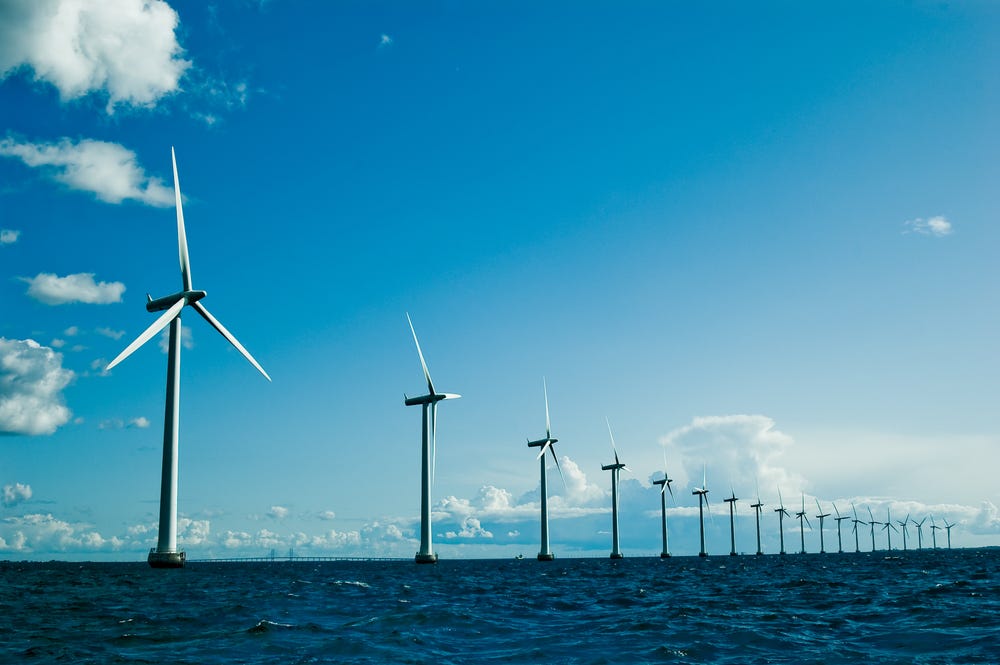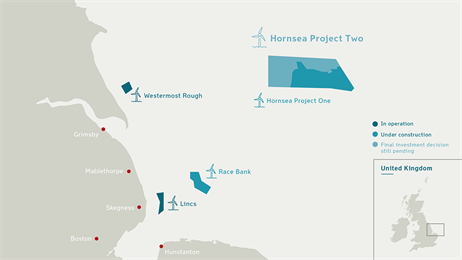U.K. Approves World’s Largest Wind Farm

The U.K. government on Tuesday approved phase two of the world’s largest wind farm, adding 300 turbines to a project 55 miles off England’s shore, in the North Sea.
The Hornsea Two project will provide 1.8 gigawatts of generating power, in addition to the first phase’s 1.2 gigawatts. In all, the 3 gigawatts provided by Hornsea is enough to power 2.5 million average (U.S.) households. At that size, the combined project is roughly equivalent to a nuclear power plant.

“Offshore wind is already on course to meet 10 percent of the U.K.’s electricity demand by 2020,” said Huub den Rooijen, Director of Energy, Minerals and Infrastructure at The Crown Estate, the government’s asset management firm. “Major developments of Hornsea Project Two’s scale will pave the way for its continued growth alongside driving down costs, creating high value jobs, and supporting the U.K.’s transition to a low carbon energy supply.”
If all goes well, the company will add a third project to the Hornsea zone, which it estimates could eventually provide 4 gigawatts of generation — 4 percent of the country’s electricity demand.
The U.K. got 25 percent of its electricity from renewable resources in 2015, and it aims for 30 percent by 2020. Much of that is expected to come from offshore wind. Some countries in the U.K. are succeeding with renewable energy goals. Scotland, for instance, got all of its electricity from wind one blustery day earlier this month.
“If our government can exploit the economies of scale to make offshore wind as cheap as it could be, whilst taking into account the wildlife in the area, the North Sea will be providing us with energy long after the end of the oil age,” said Dr. Doug Parr, chief scientist for Greenpeace UK Chief. (In fact, the U.K. gets less than 1 percent of its electricity from oil, but as electric vehicles become more ubiquitous, electricity will, indeed, begin to supplant transportation oil. In addition, oil accounts for a large portion of the U.K.’s heating, another energy hog that could be transitioned to clean electricity).
Overall, the U.K. has a goal of reducing its emissions 80 percent over 1990 levels by 2050. Under the Climate Change Act, the country establishes five-year carbon budgets, the most recent of which was approved this summer and calls for a 50 percent reduction by 2025.
But even with added offshore wind, the U.K. is facing critical energy questions.
While Scotland closed its last coal-fired power plant in March and the U.K. overall has pledged to phase out coal by 2025, the central government is simultaneously pursuing plans to allow fracking across England, in an effort to transition to “home-grown” natural gas. (There are moratoria on fracking in both Scotland and Wales.) The government has also been criticized for too-rapidly decreasing incentives for solar customers, and for making it difficult to develop onshore wind resources.
And those aren’t the only low-carbon options that are facing difficulties.
Nearly a quarter, 22 percent, of the U.K.’s electricity comes from nuclear resources, and according to Energy UK, an advocacy group, all but one of the U.K.’s nuclear power plants will have closed by 2025.
There are currently plans to build a new nuclear station, known as Hinckley, in the south of England, but the project has been beleaguered by increasing costs and political tensions. The plant is to be built by a French firm, but the Brexit vote in May raised questions about the project’s viability.
Environmentalists, who are concerned about the long-term dangers of nuclear energy, are hoping that renewable projects like Hornsea will pave the way for a complete transition.
“The rapid development and falling price of renewable power is making it very clear where the future of the energy industry should lie. And it certainly isn’t with propping up 20th century technologies like oil, gas and nuclear,” Parr said. “[Hornsea] is yet another nail in the coffin for the rationale for Hinkley power station.”







Follow Us!